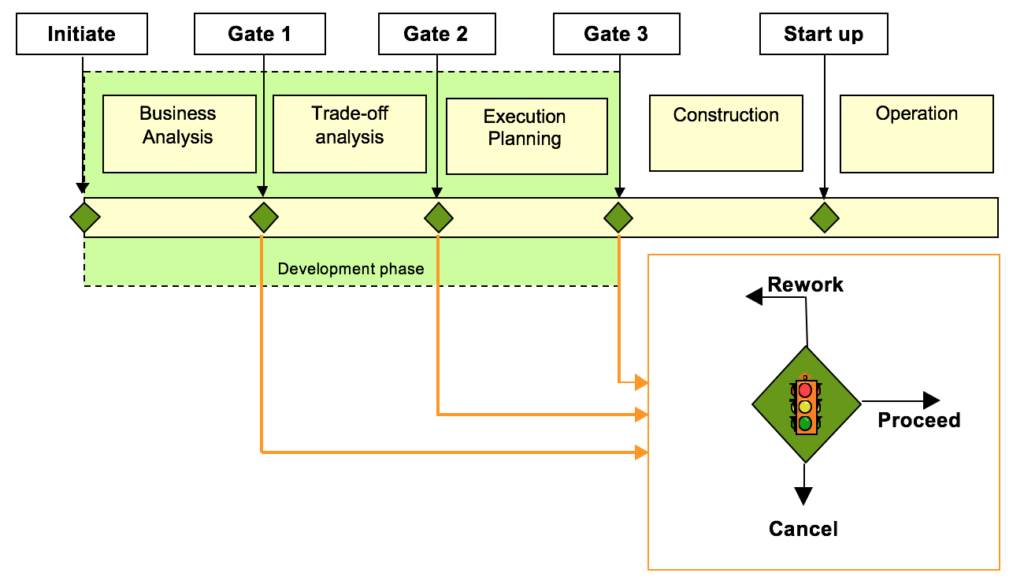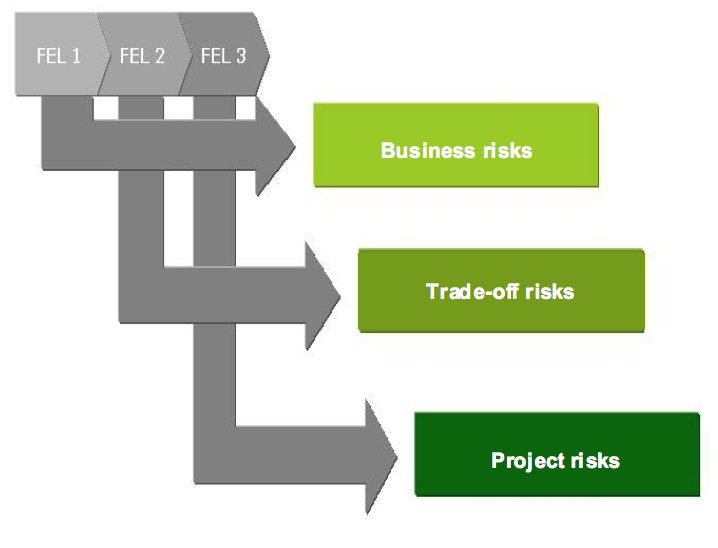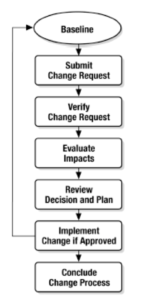Abstract
A thorough and effective management process is a critical success factor for any kind of project. That is even truer in capital projects, which usually have a development phase that is critical and mandatory before the project gets formal approval.
This paper describes the task of structuring a PMO (Project Management Office) in the logistics projects department (responsible for developing ports and railroads capital projects) of a large and multinational mining company. This PMO is in charge of supporting the development phase (front-end) of capital projects of different sizes and complexities, based on a stage gated process inspired by the FEL (Front End Loading) approach and with the help of best practices proposed in the PMBOK® Guide.
Introduction
Capital projects, due to their size and strategic importance, tend to have a high impact on the companies that perform them. In the context of this paper, capital projects are ones that:
- Provide a capacity increment in an integrated logistics chain;
- Require board approval for moving to the construction phase;
- Have a deep impact (both social and economical, direct and indirect) in the geographical area where they are deployed.
This paper describes the task of structuring a PMO (Project Management Office) in the logistics projects department (responsible for developing ports and railroads capital projects) of a large and multinational mining company. This PMO is in charge of supporting the development phase (front-end) of capital projects of different sizes and complexities, based on a stage gated process inspired by the FEL (Front End Loading) approach and with the help of best practices proposed in the PMBOK® Guide (PMI, 2008).
The PMO has the following main features:
- A project management methodology that matches a corporate process based on FEL (Front End Loading) and best practices from the PMBOK® Guide.
- A project categorization system that allows tailoring the methodology to a specific project, identifying key deliverables and processes to be used for each type of project.
- An integrated risk management process that spans the overall project life cycle.
- A project governance system that handles project initiation and termination, project priorities and scope changes.
Each feature will be presented in the following sections.
The Project Management Methodology
Several studies on capital projects, such as Nissen (2003), have shown that the success in implementing competitive projects is based on four factors: project team, technology, VIPs (Value Improving Techniques) and FEL (Front End Loading). Among them, FEL is considered to be the most crucial factor for project success.
According to Barshop (December 2003), “Front-end loading (FEL) is a process by which a company translates its marketing and technology opportunities into capital projects. The objective is to align project objectives with the business need and to develop the most efficient process design and execution plan to achieve the project objectives”.
The company developed a corporate methodology based on a FEL process that divides the development phase into three different stages, according to Exhibit 1: capital project life cycle with gate reviews
 Each phase ends with a gate review that works as a clear transition point in which the project, after being examined, is either allowed to move to the next phase, return for a better definition or cancelled. For each FEL stage a set of deliverables is defined, and in the beginning of each stage its planning is reviewed, a process inspired by the “rolling wave planning” concept proposed in the PMBOK® Guide (PMI, 2008).
Each phase ends with a gate review that works as a clear transition point in which the project, after being examined, is either allowed to move to the next phase, return for a better definition or cancelled. For each FEL stage a set of deliverables is defined, and in the beginning of each stage its planning is reviewed, a process inspired by the “rolling wave planning” concept proposed in the PMBOK® Guide (PMI, 2008).
The Project Categorization System
The company has a corporate process that defines a complete set of deliverables for each FEL stage, and that set is mandatory for projects above a certain CAPEX (Capital Expenditure) value. However, the PMO is also in charge of supporting projects with CAPEX bellow that threshold, so in order to tailor the corporate process for such projects a categorization system has been defined. This system goes beyond CAPEX value, considering questions such as:
- Is the project Greenfield (new, undeveloped site), Brownfield (to be developed on an already developed site) or both?
- What is the level of environmental permitting required?
- Will the project demand Fast Tracking?
- Will the project require land acquisition? At what level?
- Will the project interfere with communities or wildlife?
- Is this a port/railroad/both project?
- What is the perceived degree of risk for the project?
All these questions must be answered by the project team as part of the project initiation process. Based on the answers, the project can be classified as simple, medium, large or mega.
A mega project must adhere to all methodology requirements (including independent evaluation at the end of FEL 2 and FEL 3) and provide all deliverables, whereas a simple project demands a smaller set of deliverables, and can have an internal evaluation at the end of each phase. For instance, for large and mega projects a quantitative risk analysis is a mandatory deliverable for the FEL 3 stage, and it is optional for simple and medium projects (but all projects must perform at least a qualitative risk analysis during FEL 3).
Regardless of their category, all projects need to have an approved PDP (Project Development Plan) before they are authorized to proceed, and all projects are monitored based on this plan, which is reviewed at the beginning of each new stage. Also, all projects must produce a PEP (Project Execution Plan) at the end of FEL 3. This plan will guide the execution of the next stage (construction).
The Integrated Risk Management Process
The corporate process defines risk as the measure of the uncertainties in the assumptions adopted in the different disciplines of the project, in view of the project’s main objectives: schedule, budget (CAPEX) and return on investment (ROI). A risk may be a threat (negative impact on one or more objectives) or an opportunity (positive impact on one or more objectives). Notice that the definition of risk has a strong quantitative component. At the end of a development phase, the main project risks must have been evaluated and assigned a quantitative impact on schedule and CAPEX.
The level of detail of risk analysis is compatible with each FEL stage, as can be seen on Exhibit 2, level of detail of risk analysis at each FEL stage
Risk Management at the FEL 1 Stage
At this stage, risk management is broken down into two stages. The first one identifies fatal flaws in the environment, land acquisition, communities and engineering. The second stage identifies fatal flaws in economic analysis, trying to identify uncertainties in relevant economic variables.
Risk Management at the FEL 2 Stage
At the FEL 2 stage a process is defined for supporting the selection of the best alternative (site location, technological process etc.) for the project. A qualitative risk analysis follows the conclusion of the conceptual engineering studies of all alternatives to support the decision process that will select the best alternative for the project.
Risk Management at the FEL 3 Stage
At the FEL 3 stage risk analysis is broken down in two main processes:
- Quantitative risk analysis: based on Monte Carlo simulation, it evaluates the chances of meeting the main project objectives, especially CAPEX and schedule. This is a two-stage process, namely:
- Stage 1: it comprises only risk identification in the environment, land acquisition, human resources, communities, safety & security, engineering and planning. This is usually performed halfway FEL 3.
- Stage 2 comprises review of risks identified in stage 1, identification of risks in engineering and planning, quantitative analysis and development of a risk management plan. This is usually performed closer to the end of FEL 3.
- Hazard and Operability Analisys – HazOp: a structured technique for qualitative analysis developed in order to identify operational problems in project processes that can compromise or jeopardize capacity, productivity and / or safety. This analysis is usually performed upon completion of engineering basic design.
The Project Governance System
In order to be included in the portfolio of projects monitored by the PMO, a project must undergo a project authorization process based in the initiation process group described in the PMBOK® Guide (PMI, 2008). The PMO manager receives a Project Charter proposal, and submits it for internal analysis of the engineering area. If and when the Project Charter is approved, a project code is created for the corresponding project and a project manager is desginated. His first order of business is to gather a core project team and start developing a PDP (Project Development Plan) for the corresponding FEL stage upon which the project is received.
Change requests are managed based on the processes described in PMI (2007) and depicted in Exhibit 3. Change control process according to PMI (2007)
If a project is approved to proceed after a FEL 3 gate review, it is transferred to a different structure to go to the construction phase. Depending on the project size a projectized structure is created for it, and it is common that team members from the development phase continue with the project during the construction phase.
Considering that at the end of FEL 3 the project moves to a different structure within the department, a formal transfer term must be signed between the involved parties and after the FEL 3 gate review.
Periodically, an Executive Panel is published internally, with an executive view of the PMO portfolio and all projects main milestones.
Final Words
We described how a PMO focused in the development of capital projects has been structured based on existing processes, tools and techniques within the company. The resulting methodology adheres both to the FEL approach and to PMI best practices as proposed in the PMBOK® Guide.
All this work was performed while the project pipeline was kept active, with projects entering and leaving the portfolio. The governance system survived very well to the bumps generated by the economical crisis of 2008/2009 (the Brazilian PIB shrank by 0,2% in 2009), and has been very efficient nowadays, when the economy, at least in the mining sector, is strongly recovering.
We believe that the four features described in this paper (a project management methodology, a project categorization system, an integrated risk management process and a project governance system) can be used/adapted by other organizations that handle capital projects as a starting point for implementing their own PMO and achieving more effective results in their capital projects.
References
Barshop, Paul (December 2003). Best Practice Pays Off. European Chemical News, 22 December 2003 – 11 January 2004, p. 16-17.
Nissen, Robert A. (2003). VIPs: WHO ARE THEY AND WHAT CAN THEY DO FOR US? Retrieved 03/10/10 from Northwest Construction Consumer Council Web site http://www.nwccc.org/upload/nissen.pdf .
PMI – Project Management Institute (2007). Practice Standard for Project Configuration Management. Newtown Square, Pennsylvania: PMI.
PMI – Project Management Institute (2008). A Guide to the Project management Body of Knowledge Fourth Edition. Newtown Square, Pennsylvania: PMI.



